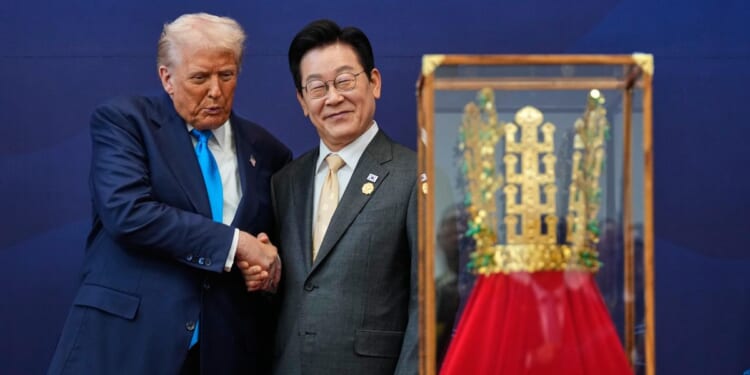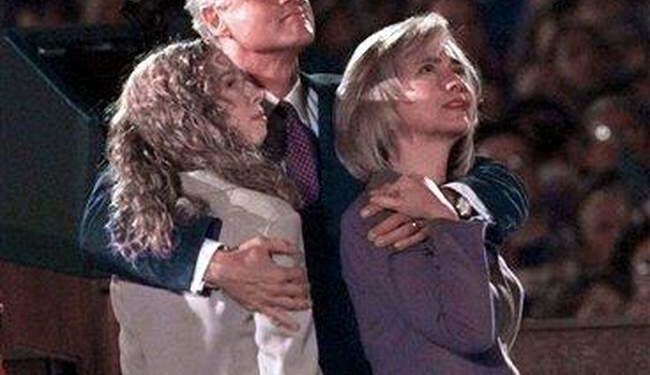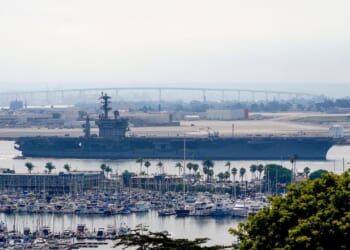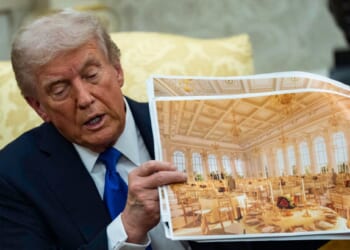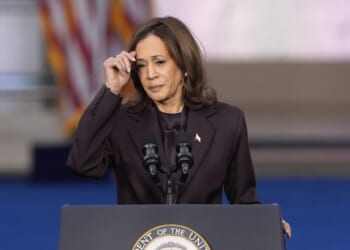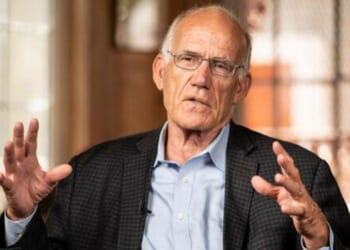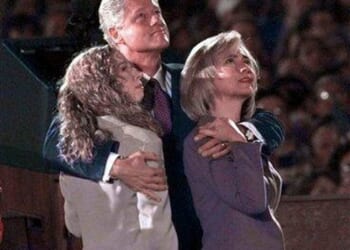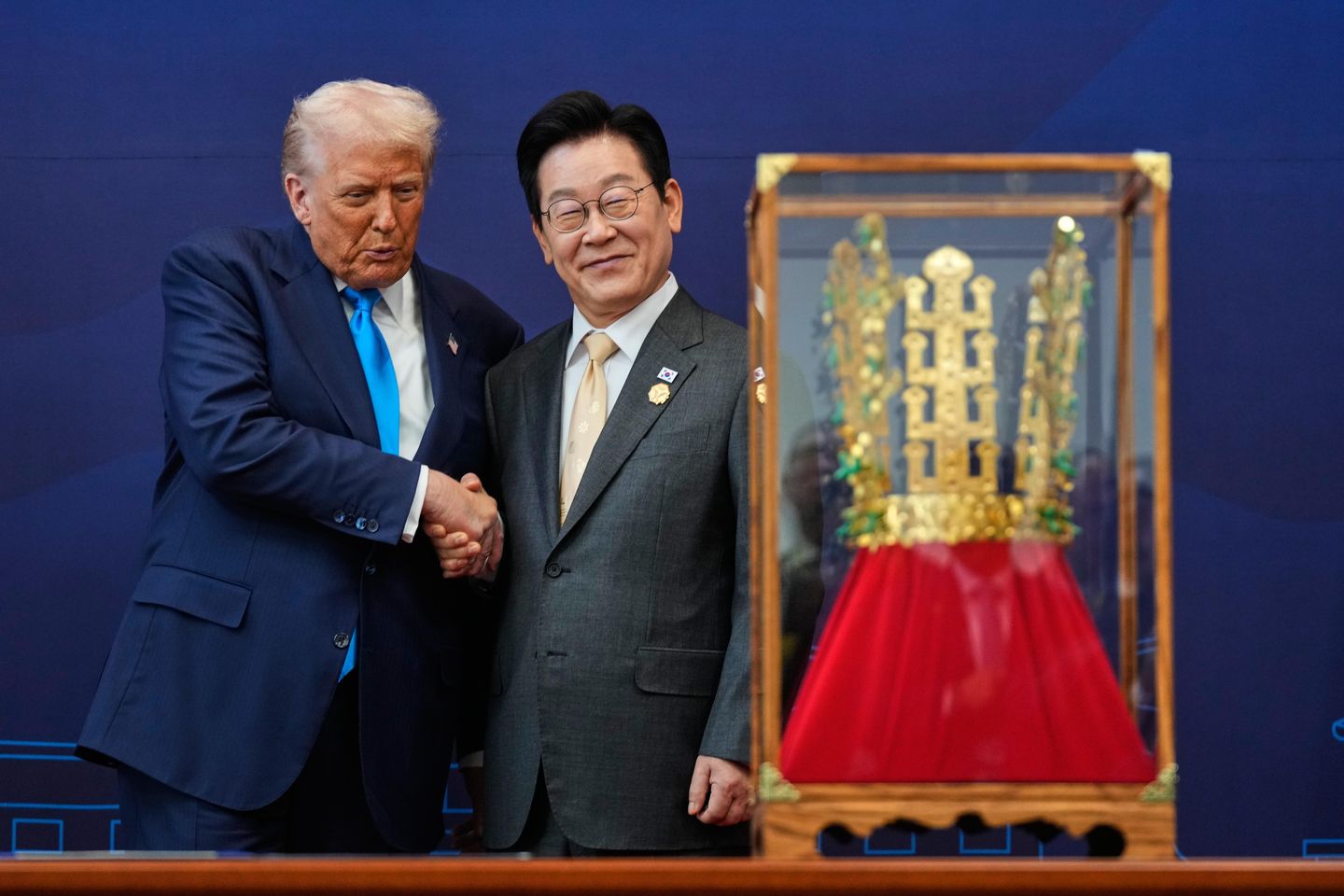
SEOUL, South Korea — U.S. President Trump landed in South Korea for a state visit and a packed summit with South Korean President Lee Jae-myung Wednesday in the southeastern city of Gyeongju.
The latest stop on his five-day Asia tour came one day after his meeting with Japanese Prime Minister Sanae Takaichi in Tokyo and one day before his high-stakes summit with Chinese President Xi Jinping.
Gyeongju, the historic capital of the ancient Silla Dynasty, known today as an “open air museum,” is the host of this week’s 2025 Asia-Pacific Economic Cooperation summit.
South Korea ensured vibes were upbeat.
Mr. Trump was greeted, on his arrival in-country, with a band playing his rally theme “YMCA.”
Meeting Mr. Lee at Gyeongju’s museum, Mr. Trump was presented with a medal and sash — South Korea’s highest civilian order — as well as a replica of a golden Silla crown. Mr. Trump praised both volubly.
In talks, the two leaders added detail to a complex trade deal, while Mr. Lee asked Mr. Trump about South Korea acquiring nuclear-powered submarines.
One visitor who would likely have received a warm welcome from both presidents was a no-show.
In the run-up to his five-day Asia trip, Mr. Trump repeatedly spoke of his hopes of renewing his first-term acquaintance with North Korean leader Kim Jong-un.
Mr. Lee, who took office in June, has frequently voiced hopes of engaging with Mr. Kim — reversing the stance of his conservative predecessor, impeached former President Yoon Suk Yeol.
Regarding the non-meet, the subject of intense speculation, Mr. Trump said, “We really weren’t able to work out timing.”
North Korea sent its own message. Pyongyang state media, monitored in Seoul, announced Wednesday its forces had, the prior day, carried out a cruise missile test in the Yellow Sea on Tuesday.
South Korea’s Yonhap News Agency wrote that the test had not been publicized in domestic-facing vernacular media, indicating that the target audience for the launches was overseas.
Tuesday’s launch followed a test of hypersonic ballistic missiles on Oct. 22.
Experts believe Pyongyang feels less compelled to engage Washington than in 2018-2019, when Mr. Trump and Mr. Kim met three times.
In 2024, North Korea entered a far-reaching security partnership with Russia. Moscow offers Pyongyang economic and technical aid, as well as diplomatic and political support in global fora.
There had been widespread hopes in South Korea that Wednesday’s summit could see a final agreement on a $330 billion investment by Korea and Korea’s top firms in the U.S.
The White House on Tuesday released a detailed outline of a similar investment pledge by Japan, worth $550 billion.
Both deals are tied to Mr. Trump’s tariffs.
South Korea has pledged a mixed package of phased investments, loans and loan guarantees.
Mr. Trump requested “up front” payments. Seoul responded that would drain its forex reserves, valued this month at $422 billion by Trading Economics.
Despite a lack of fine print, Mr. Trump said the Korea deal was “just about finalized.”
Details, such as timings and investment vehicles, were not clear, but South Korea’s presidential office laid out broad contours: A $200 billion cash investment and another $150 billion in U.S. shipbuilding. The cash investment will be capped at $20 billion annually to avoid forex risk.
In return, U.S. auto tariffs would drop to 15%.
That should relieve Korean carmakers, who have been under 25% tariffs, compared to Japanese competitors’ 15%.
A deal should also provide relief to Mr. Lee, a former leftist who has pivoted to the center ground. Despite his constant talk-ups of the criticality of the U.S. alliance, he is under sustained political assault from conservatives in the U.S. and Korea who consider him pro-North Korea and pro-China.
Certainly, his government has unleashed widespread legal assault against the previous administration.
In the wake of Mr. Yoon’s 2024 martial law declaration and subsequent impeachment, multiple persons are in detention under prosecution investigation. These include Mr. Yoon, his wife, and religious figures who either took strong political stances or were embroiled in alleged corruption.
Putting additional strain on cross-Pacific ties was the arrest and deportation by the U.S. Immigration and Customs Enforcement of hundreds of South Korean specialist workers at an under-construction Hyundai factory in Georgia in September for working without appropriate visas.
That shook Korea. Modest anti-U.S. and anti-Trump demonstrations were ignited, and some fret that the affair may strengthen the left wing of Mr. Lee’s party. However, a person familiar with Korean politics noted that “Lee is more popular than his party,” granting him maneuver room.
The future of the Korea-U.S. alliance is set to be discussed, with U.S. Defense Secretary Pete Hegseth attending, in annual bilateral talks in Seoul on Nov. 4.
During Wednesday’s summit, Mr. Lee made a request to America that stumped experts.
“I hope you will make a decision to allow us to have supply for nuclear-powered submarines,” he told Mr. Trump, requesting an acceleration on consultations on spent nuclear-fuel reprocessing.
Mr. Lee made clear that the proposed boats would be nuclear-powered, not nuclear-armed.
“If fuel supply is permitted, we can build several submarines equipped with conventional weapons using our own technology to defend the waters around the Korean Peninsula, ultimately reducing the burden on U.S. forces,” Mr. Lee said.
Nuclear submarines boast longer range and underwater endurance than conventional boats, making them ideal for high-endurance, far-ranging patrols. South Korea’s Navy, postured against North Korea, has no such mission set.
Mr. Lee has also made clear that he wants to improve relations with China, and Seoul has customarily distanced itself from any defense of Taiwan.
“We are dealing with North Korea: We don’t need a nuclear-powered submarine,” said Yang Uk, a security expert at Seoul’s Asan Institute. “If we were fighting the Chinese Navy out on the big ocean, then nuclear submarines are a must – but if not, why would we need that, and why would we spend that much money?”
Mr. Lee has made clear that he wants to improve relations with China, and Seoul has customarily distanced itself from any Taiwan contingency.
A precedent for Mr. Lee’s request exists.
The Australia-U.K.-U.S., or AUKUS, pact will supply Canberra with a flotilla of attack boats for forward defense: Australia’s littoral is almost 5,000 miles from China’s coast. An Australian Naval officer, who spoke off the record, noted that even the distances between Australian ports are vast.
This is not the case for geographically smaller South Korea, which shares a peninsula with North Korea and is separated from its strategic competitor by a 4-mile-wide Demilitarized Zone.
Mr. Yang called Mr. Lee’s request “a political fiasco.”
He suggested politicians want to impress the public by acquiring iconic weapons to “show they are doing their best for defense” against nuclear-armed North Korea — even though there is “no reason” for them, operationally.

